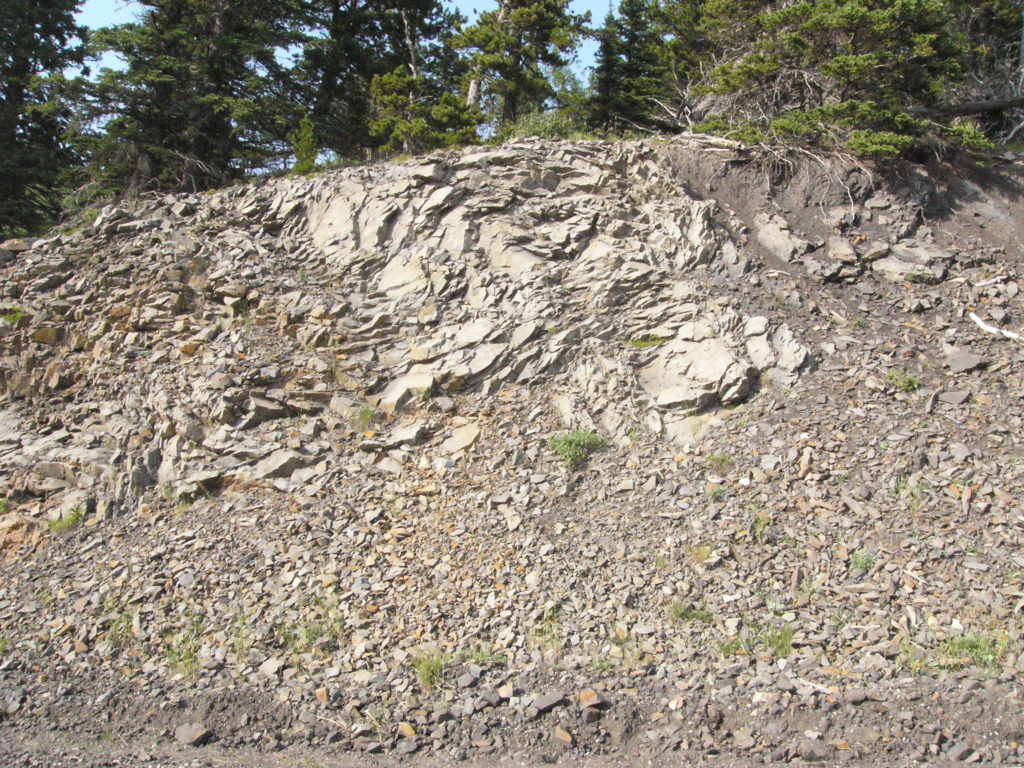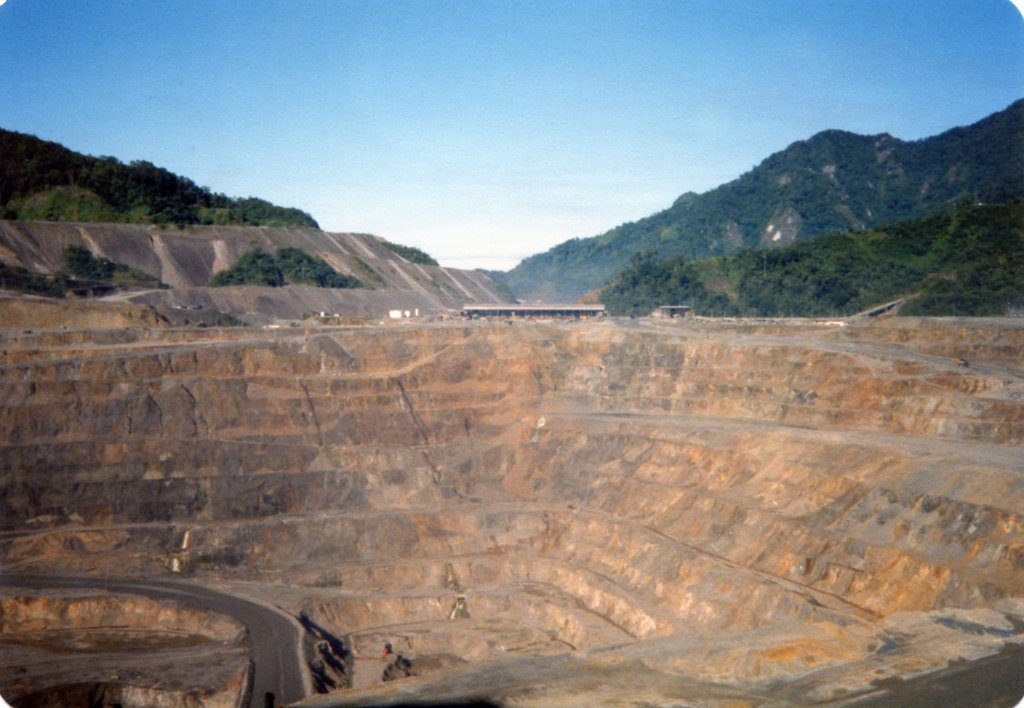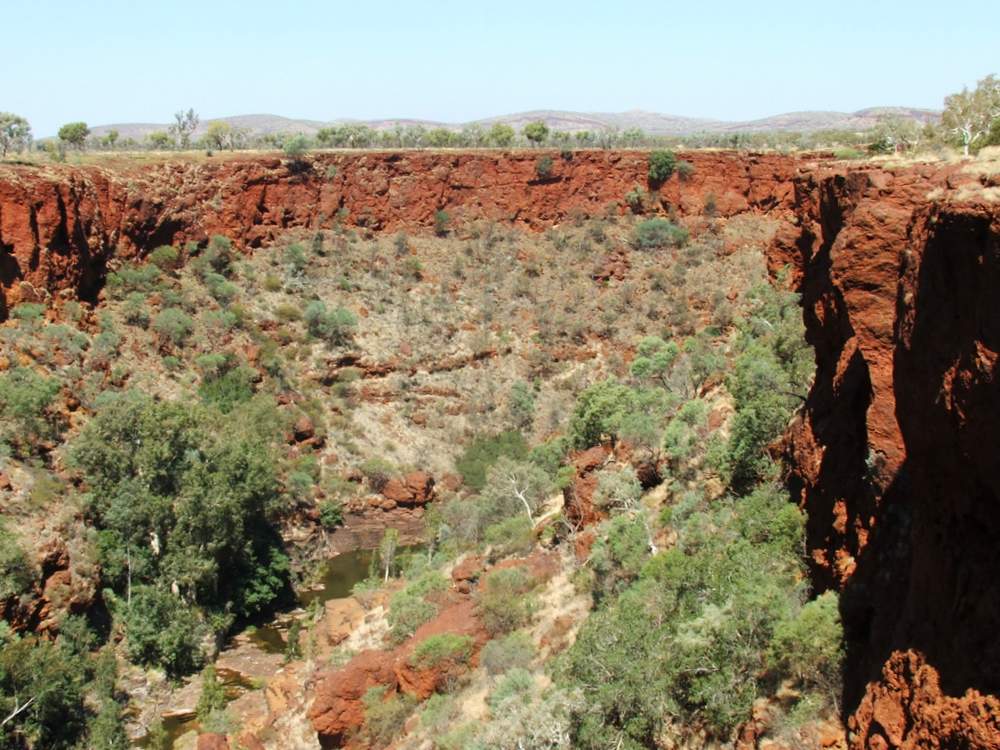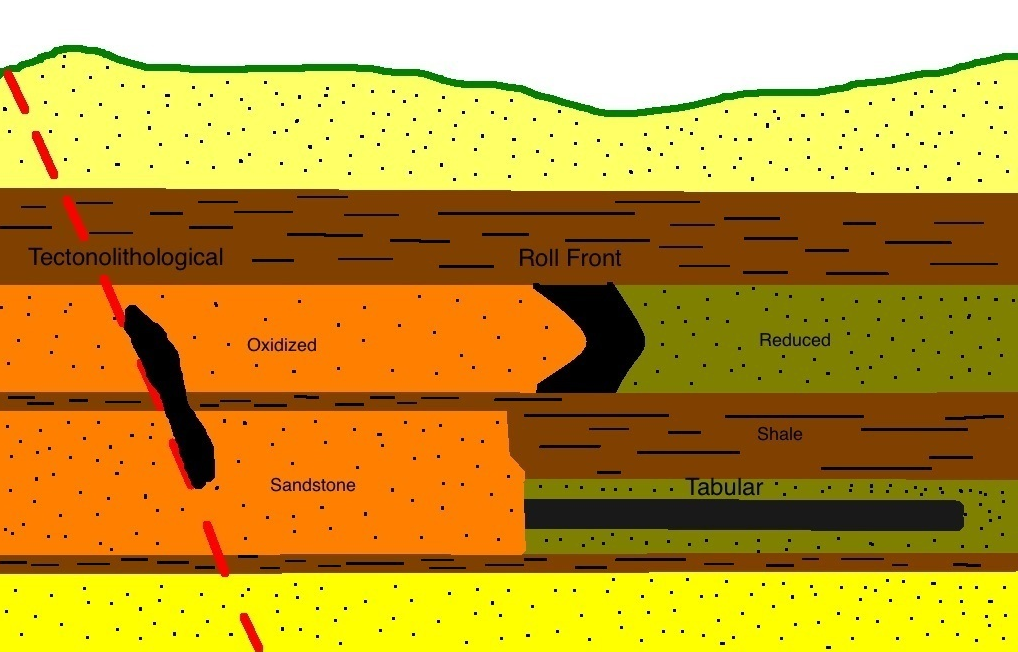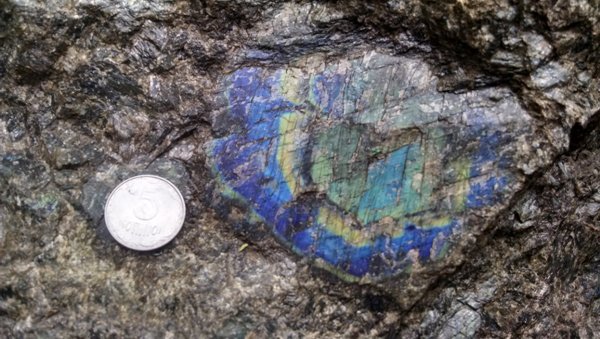Skarn vs. skarn deposit
Skarn is a relatively simple rock type formed when a magma body intrudes into carbonate sedimentary rocks such as limestone or dolomite. At the contact between the two rock types, a collection of course-grained calc-silicate minerals, mostly the minerals garnet and pyroxene, form as a result of the heat and fluids released by the cooling magma.
Not all skarns contain economic mineralisation but when they do contain valuable ore minerals, they are called “skarn deposits”.
There are seven major skarn deposit types based on the metal they dominantly contain: tungsten (W), tin (Sn), molybdenum (Mo), copper (Cu), iron (Fe), lead-zinc (Pb-Zn) and gold (Au) ores.
How do they form?
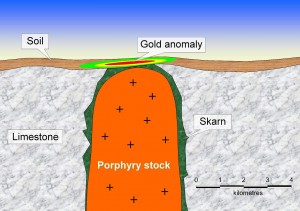
Most skarn deposits form during the transfer of heat, fluid and metals from the cooling magma into the surrounding rock.
The basic process involves three steps;
First, a magma body intrudes carbonate-rich sedimentary bedrock. These rocks are altered and dehydrated by the heat from the intruding magma. There is no mineralisation at this stage.
Second, fluids leave the magma and enter the surrounding rocks. When the magma intrudes deep beneath the earth’s surface, the fluids move along narrow channels, such as faults or bedding planes. The fluids related to shallower deposits tend to be less constrained and spread out more like a halo. A few ore minerals are precipitated at this stage.
The real action takes place as the system is cooling down. Most studies show that metal precipitation in a skarn deposit is related to the decreasing temperature of the ore fluids, the mixing of these fluids with surface-derived waters and neutralization by carbonate minerals.
Similar to copper porphyry or VMS deposits, this alteration leads to a distinctive zoning pattern. Recognising the features and mineralogy of this distinctive zoning is important for exploration.
Classification
Skarn deposits are divided and subdivided according to several variations. When the host rock is limestone, it’s known as a calcic skarn and when it’s dolomite, it’s called a magnesian skarn.
Skarn deposits are also described as exo- or endo-skarns depending on the location of the mineralisation. An exoskarn forms within the sediment, outside of the intruding magma. An endoskarn forms within the igneous rock (usually a granite) formed as the magma cools. Most of the world’s economic skarn deposits are exoskarn.
Skarn ore minerals
A skarn is basically an envelope or halo of alteration around a granite intrusion. While this alteration can extend for several kilometers, the mineralized portion is usually much, much smaller.
Skarn ore minerals can be scattered throughout the rock or deposited in layers, veins or along bedding; grain size ranges from fine to very coarse.
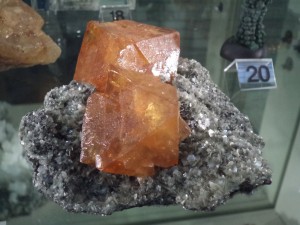
The collection of ore minerals found in a skarn deposit depends mainly on the chemistry of the granite and are a mixture of sulphide and oxide minerals.
- Fe-skarns contain mostly the Fe-oxide mineral, magnetite.
- W-skarn contain mostly scheelite (tungsten ore), molybdenite (molybdenum ore) and the copper-iron sulphide, chalcopyrite.
- Cu-skarns contain mostly chalcopyrite, the iron sulphide pyrite, and iron oxides such as hematite and magnetite
- Zn-Pb skarns contain mostly the zinc sulphide sphalerite, the lead sulphide galena, iron sulphides pyrrhotite and pyrite, and the magnetic iron oxide magnetite.
- Sn-W skarns contain mostly the tin-oxide mineral cassiterite.
How to find a skarn deposit
It is important for explorers to understand the general zoning pattern of skarn deposits, particularly the outermost alteration features. Although a full discussion of these features is beyond the scope of this article, alteration features may include;
- distinctive minerals like pyroxenes which are not typical in sedimentary or granitic rock,
- features like fluid “bleaching” of the rock,
- evidence of fluid escape from the sedimentary rock (fluid escape structures),
- and isotopic haloes which can be identified through lab analysis of isotope ratios in the rock.
Skarn deposits tend to be denser than surrounding rocks and therefore may contrast in a gravity survey. In addition, skarn deposits with an abundance of magnetic minerals such pyrrhotite or magnetite may be identifiable on a magnetic survey. Using geophysics to find skarn deposits can be more difficult if the dominant ore mineral is the zinc-sulphide sphalerite since it is not magnetic or conductive. Most of the usual geophysical methods used in exploration will struggle to find Zn-Pb skarn deposits.
A few famous skarn deposits
Skarn deposits are abundant and form all over the world in rocks of all ages but most geologists would struggle to name more than one off the top of their head. Many are found near larger Cu-porphyry deposits, such as at Bingham Canyon in Utah.
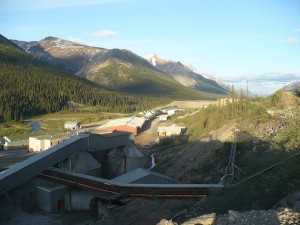
- The Cantung Mine operated by North American Tungsten in the Northwest Territories of Canada is the western world’s largest producer of Tungsten concentrate. Their feasibility-stage Mactung project is also a skarn deposit.
- The infamous Ok Tedi mine in western Papua New Guinea is a giant porphyry and skarn copper-gold deposit extracting about 20 million tonnes of ore each year.
- The Pine Creek mine in California was one of the world’s larger skarn scheelite deposits, and was a major source of North America’s tungsten supply, but is no longer operating.
- The Kamaishi mine is typical of iron-copper skarn deposits in Japan and includes the largest iron skarn orebody in Japan, the Shinyama, measuring 400m long by 80m wide and stretching over half a kilometre deep.
Of course, no discussion of skarns would be completed without reference to the large tin–tungsten deposits of China. China is by far the world’s largest tungsten producer. While not all of China’s deposits are “classic” skarns as we describe above, they share a similar geologic history. Many are considered “skarn-type” and nearly all were formed by hydrothermal activity related to granitic intrusions into existing sedimentary limestones. Some examples include:
- The Xianglushan Mine in Jiangxi Province is a tungsten skarn and China’s largest tungsten mine in terms of annual output.
- The Shizhuyuan Skarn-Greisen Deposit in Hunan Province, China. This is one of the largest tungsten deposits in the world and the largest in China in terms of proven reserves.
- The Yaogangxian Mine in Hunan Province consists of two deposits; a quartz vein-type tungsten-tin deposit related to granite intrusions into sedimentary rocks, and a skarn-type deposit.
Further reading
Check out World Skarn Deposits by Meinert et al (2005) starting on page 299 of the Economic Geology 100th Anniversary Volume or the 1982 Special Issue Devoted to Skarn Deposits
The report Cu, Au, and Zn-Pb Skarn Deposits by the USGS is also comprehensive, as is this Overview of Skarn Deposits on the BC Ministry of Energy and Mines website.

